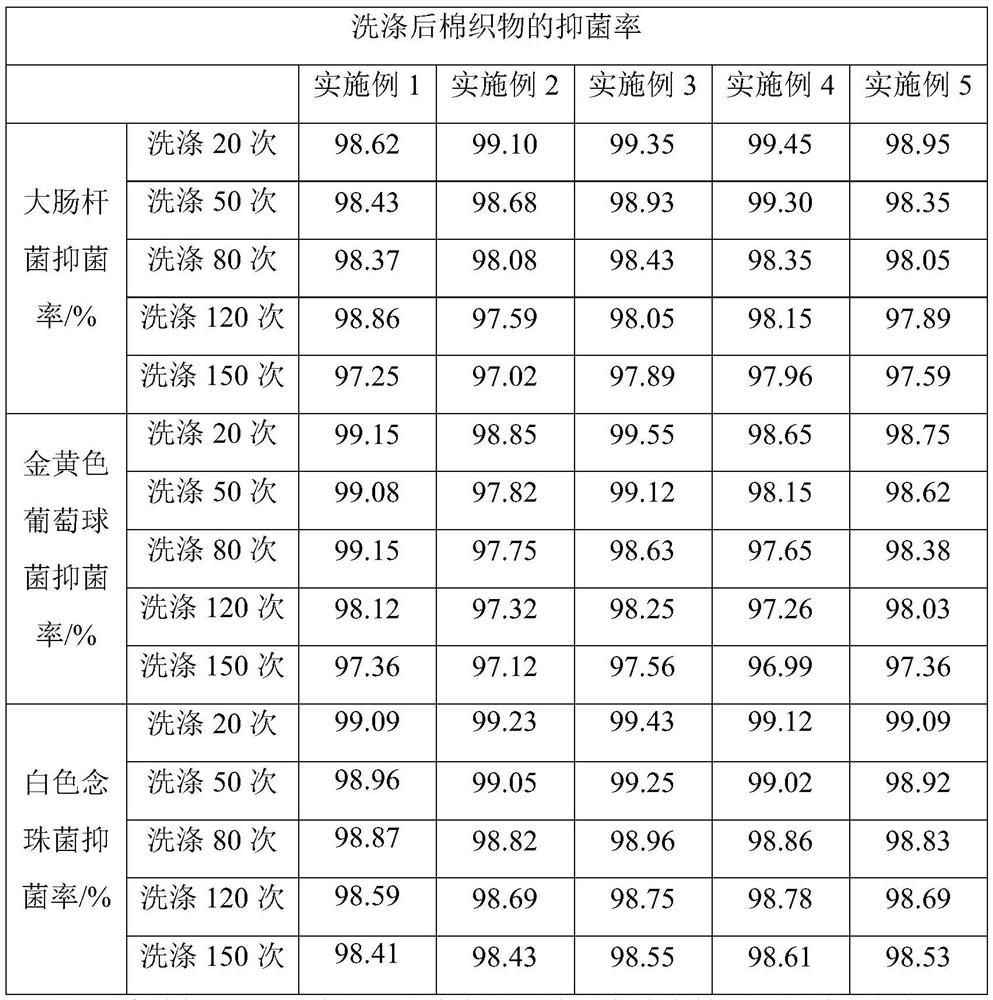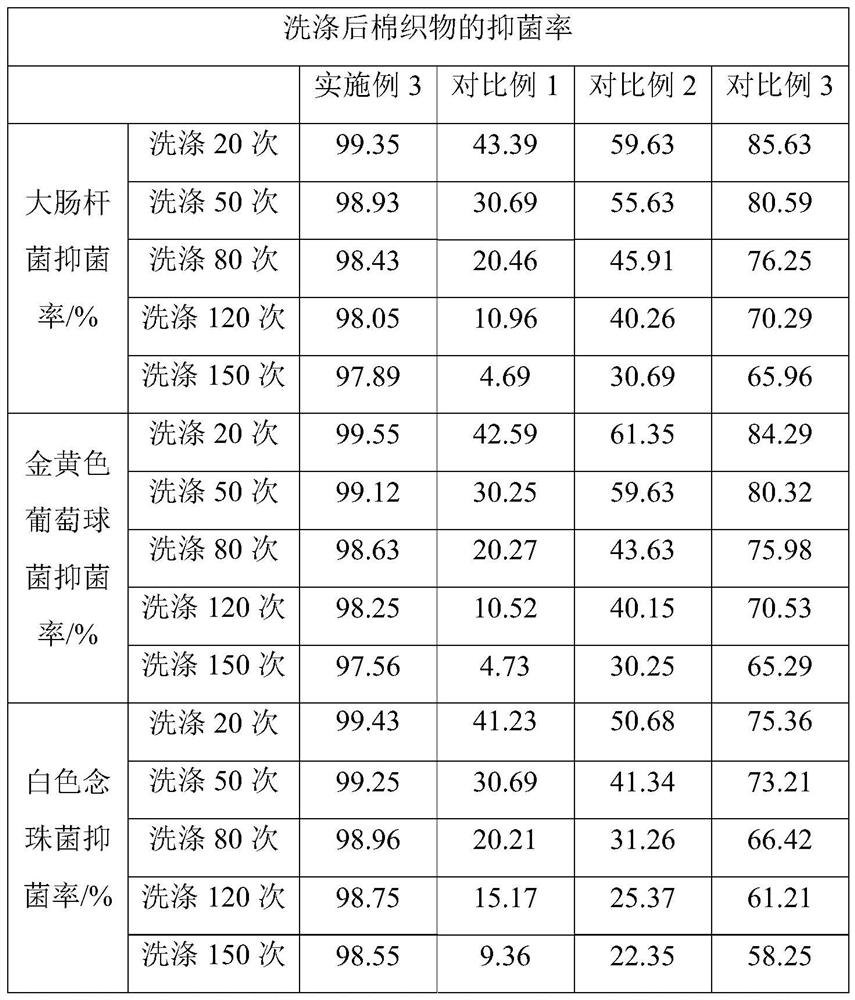Preparation process of non-soaking antibacterial and deodorant cotton
A preparation process, antibacterial cotton technology, applied in the direction of non-woven fabrics, rayon manufacturing, plant fibers, etc., can solve problems such as difficult large-scale and low-cost production practices, complex preparation processes, etc., to reduce peeling and improve antibacterial properties , Good washing resistance effect
- Summary
- Abstract
- Description
- Claims
- Application Information
AI Technical Summary
Problems solved by technology
Method used
Image
Examples
Embodiment 1
[0027] A kind of preparation technology of non-soaking antibacterial and deodorant cotton
[0028] Non-soaking antibacterial and deodorant cotton, prepared by the following steps:
[0029] Step (1): Pretreat the dried cotton fibers: soak them in a concentrated sodium hydroxide solution at 50°C for 30 minutes at room temperature, then wash them in hot water at 50°C for 3 times, and finally rinse them with cold water and dry them;
[0030] Step (2): carry out antibacterial treatment to the cotton fiber after step (1) pretreatment: the cotton fiber after step (1) pretreatment is in diethylenetriamine-ethanol solution, zinc nitrate hexahydrate solution and silver nitrate solution composition Soak in the mixed solution for 30 minutes, and keep stirring; then raise the temperature to 30°C, continue to stir, and add zinc nitrate solution dropwise while stirring; take out the cotton fiber from the solution and place it in a microwave oven, and heat it at a power of 600W for 10 minutes...
Embodiment 2
[0037] A kind of preparation technology of non-soaking antibacterial and deodorant cotton
[0038] Non-soaking antibacterial and deodorant cotton, prepared by the following steps:
[0039]Step (1): Pretreat the dried cotton fibers: soak them in a concentrated sodium hydroxide solution at 55°C for 25 minutes at room temperature, then wash them twice in hot water at 50-70°C, rinse them with cold water, and dry them;
[0040] Step (2): carry out antibacterial treatment to the cotton fiber after step (1) pretreatment: the cotton fiber after step (1) pretreatment is in diethylenetriamine-ethanol solution, zinc nitrate hexahydrate solution and silver nitrate solution composition Soak in the mixed solution for 30 minutes, and keep stirring; then raise the temperature to 35°C, continue to stir, and add the zinc nitrate solution dropwise while stirring; take out the cotton fiber from the solution and place it in a microwave oven, and heat it at a power of 600W for 5 minutes to obtain a...
Embodiment 3
[0047] A kind of preparation technology of non-soaking antibacterial and deodorant cotton
[0048] Non-soaking antibacterial and deodorant cotton, prepared by the following steps:
[0049] Step (1): Pretreat the dried cotton fibers: soak them in a concentrated sodium hydroxide solution at 50-60°C for 25 minutes at room temperature, then wash them in hot water at 55°C for 3 times, and finally rinse them with cold water and dry them;
[0050] Step (2): carry out antibacterial treatment to the cotton fiber after step (1) pretreatment: the cotton fiber after step (1) pretreatment is in diethylenetriamine-ethanol solution, zinc nitrate hexahydrate solution and silver nitrate solution composition soak in the mixed solution for 30 minutes, and keep stirring; then raise the temperature to 32°C, continue to stir, and add the zinc nitrate solution dropwise while stirring; take out the cotton fiber from the solution and place it in a microwave oven, and heat it for 6 minutes at a power o...
PUM
 Login to View More
Login to View More Abstract
Description
Claims
Application Information
 Login to View More
Login to View More - R&D
- Intellectual Property
- Life Sciences
- Materials
- Tech Scout
- Unparalleled Data Quality
- Higher Quality Content
- 60% Fewer Hallucinations
Browse by: Latest US Patents, China's latest patents, Technical Efficacy Thesaurus, Application Domain, Technology Topic, Popular Technical Reports.
© 2025 PatSnap. All rights reserved.Legal|Privacy policy|Modern Slavery Act Transparency Statement|Sitemap|About US| Contact US: help@patsnap.com


